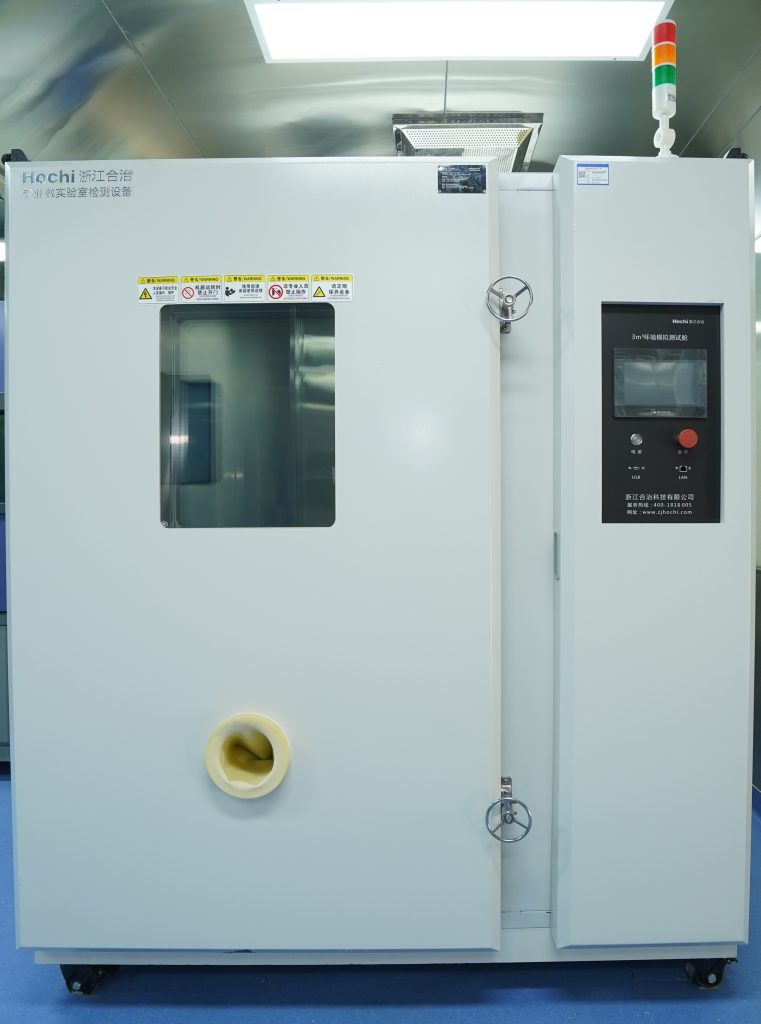
Sensor Environmental Test Chamber
Brand
浙江合治
Model
Hochi-YW2203
Place of origin
China
Location
E3-129
Main specifications
1.Volume: 1.41.41.5m = 3m³. The inner side of the chamber is made of high-quality 1.0mm SUS304L stainless steel plate, and the outer side is made of 1.0mm cold-rolled steel plate with plastic spraying. The thermal insulation material consists of rigid polyurethane foam and ultra-fine glass fiber wool, with a thickness of 100mm.
2.Temperature and humidity requirements: Temperature range: -10 - +50±1℃.
3.Humidity range A: 30 - 90±2% R.H (when the temperature is between 20℃ and 50℃). The temperature uniformity is less than ±2℃, the humidity uniformity is ≤3% R.H, the temperature deviation is ≤±2.0℃, and the humidity deviation is ≤±3%.
4.Temperature rise rate and cooling rate: The cooling rate is 0.7 - 1.2℃/min, and the heating rate is 1.0 - 3.0℃/min.
5.Sampling port: Connected by stainless steel lock nuts, and can be sealed when not in use. Glove port: There is one glove port with an inner diameter of 12cm, made of aluminum alloy or polytetrafluoroethylene, which is easy to disassemble (set according to requirements).
6.The test chamber is equipped with an exhaust system and a circulating purification system. The exhaust and circulating purification are controlled by electric valves. When the emission system of the test chamber is opened, the pollutants in the inner chamber shall not leak out.
7.The number of particles with a particle size of more than 0.3um is not higher than 1000 pieces per unit volume. The background value of formaldehyde is not higher than 0.05mg/m³, the background value of TVOC is not higher than 0.3mg/m³, and the background value of toluene is not higher than 0.1mg/m³.
Main functions
1. It can accurately control environmental parameters such as temperature, humidity, and air flow rate inside the chamber.
2. It can be used to detect harmful substances such as formaldehyde and VOCs (Volatile Organic Compounds) released by various building materials, furniture, decorative materials, etc. By placing samples inside the chamber, after a certain period of time, air samples inside the chamber are collected for analysis to determine the concentration of harmful substances released by the samples, so as to evaluate the environmental protection performance of the materials.
3. Place purification equipment such as air purifiers inside the chamber. Release a certain amount of pollutants inside the chamber, then turn on the purification equipment, and detect the removal effect of the purification equipment on pollutants within a certain period of time, thus evaluating the performance of the purification equipment.